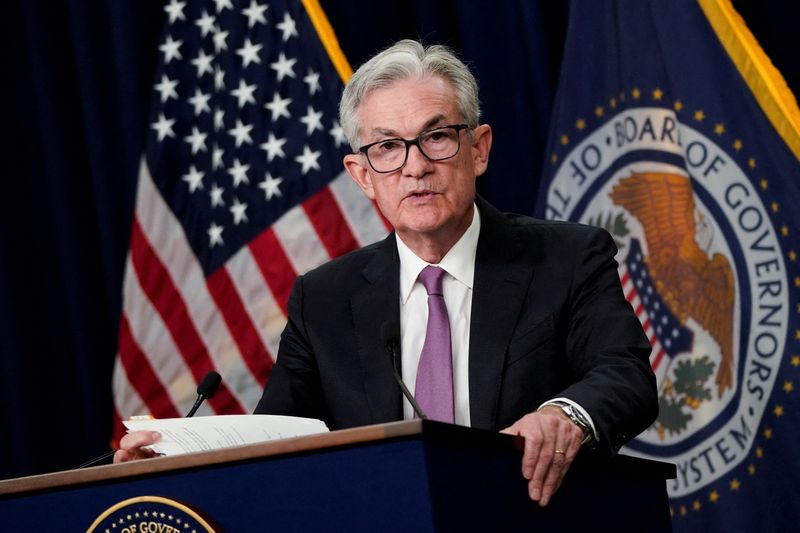(Reuters) - U.S. Federal Reserve Chair Jerome Powell had a flurry of activity with his rate-setting colleagues one day before the central bank's June policy meeting, when it pivoted last-minute to a larger-than-expected interest rate hike.
Powell met with two regional Fed bank presidents and three board members on Monday, June 13, his monthly schedule published on Friday shows, including a virtual meeting with a member of the Fed Board of Governors for just 10 minutes that day at 3 p.m. (1900 GMT).
The Fed's policy meeting was held June 14-15, with its policy decision released at the close of the meeting on Wednesday, June 15.
Typically, the meetings that Powell has with his colleagues in the run-up to policy meetings last 30 minutes each. He had a 15-minute meeting with another unnamed Board member later in the day on June 13. It was the first time he had met more than two policymakers on a Monday preceding a policy meeting since April 2021.
That same afternoon the Wall Street Journal reported the U.S. central bank was considering a 75 basis point interest rate hike, which was interpreted as being an informal communication by the Fed and was the catalyst for economists and investors to sharply raise their rate hike forecasts to a 75 basis point move.
Fed officials had previously flagged a half percentage point rise as the likely outcome on June 15. The central bank's own rules forbid policymakers' commenting publicly on monetary policy in the 10 days running up to interest-rate-decision meetings.
The Fed ended up raising interest rates at the June meeting by 75 basis points, the largest hike in more than a quarter of a century, as it ramped up its battle to quell inflation running at a four-decade high.

Following the meeting, Powell told reporters the Fed's hand had been forced over the preceding days by "quite eye-catching" inflation expectations data, as well as data on price pressures the prior Friday, and that he had settled on such an outcome with his colleagues before the meeting.
Last week, the Fed raised its benchmark overnight lending rate by another three-quarters of a percentage point to a target range between 2.25% and 2.50%. It has hiked that rate by a total of 225 basis points since March in an increasingly aggressive effort to quash stubbornly high inflation even as recession fears gather pace.